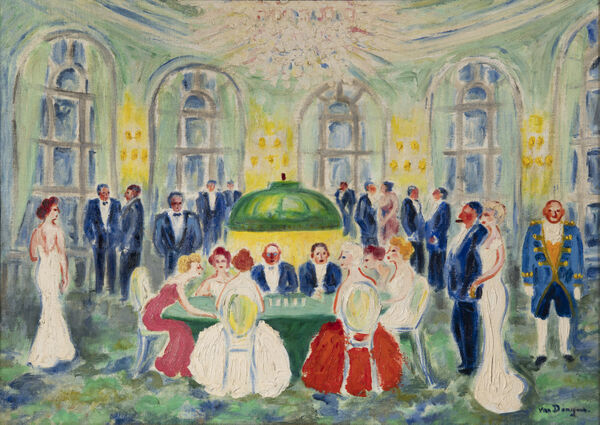The Art of Leisure In Modern French Society
27 Aug - 23 Sept 2024
Alon Zakaim Fine Art is proud to present The Art of Leisure in Modern French Society – an exhibition that explores the recreational activities of the upper and lower classes in France between c.1870-1950. Featuring a high-quality selection of Impressionist and Modern artworks, viewers are invited to reflect on the rapidly transformative nature of the leisure scene in France, as treated by some of the greatest artists of their time. Displayed across two floors, the show is curated thematically: upstairs highlights rural vocations of nature and the seaside; the lower floor shifts focus towards urban pastimes including the daytime leisure and nightlife, especially in Paris.
The concept of leisure typically infers a moment of recreational activity that is enjoyed in one’s spare time. For many centuries, however, access to leisure remained a privilege of the upper class who were not necessarily tied to jobs to support an income. The introduction of industrial and technological innovations in the nineteenth century afforded many of the working class with newfound opportunities to develop hobbies and spend increased time with their families. The Impressionists and their neo-classical counterparts—while opposed fundamentally in style, ideas, and execution—shared common ground in their mutual high-regard for leisure, and upheld the pleasures of modern life in the arts.
The exhibition opens with a fine selection of Impressionist pictures of bucolic landscapes by Camille Pissarro, Pierre-Auguste Renoir, Maximilien Luce, and Henri Martin. Rapid, fluid brushstrokes—characteristic of the Impressionist technique—bestowed their works with a transient quality, wherein rivers cascade and trees sway fiercely in the wind. This loose application of paint not only complemented the depicted leisure, but evoked a sensation of occasion that revolutionised Modern art. Regardless of class, nature presented an economical and peaceful escape from the laboriousness of working life. More often, the Impressionists sought to imbue their landscapes with an air of sensitivity, or idealism, towards a place where they were born, lived, or frequented, as seen in the works of Lebasque and Martin on display. In Lebasque’s Femmes et enfants this treatment is heightened: a nursing mother feeds her child within a walled garden, inferring the painter’s private perspective. His warm colour palette and diffuse lighting instil an empathetic quality on this personal subject.
While nature was enjoyed by all, the beaches along the French coast were predominantly frequented by the bourgeoisie. Eugène Boudin’s scenes of Trouville beach earned him widespread acclaim when exhibited in the Parisian Salon; similar depictions of the working class, however, were often dismissed as inappropriate. This did not deter painters such as Pissarro and Lebasque, who chose to portray the working class at the harbour. Pissarro’s rendition of Le Havre port features scores of meandering locals watching on as boats of all sizes arrived and departed at the dock. He later expressed to his son Lucien his disappointment at collectors who were still concerned only with purchasing Salon-approved paintings.
Across France, the urban leisure scene flourished too, not least in the capital itself. During the second half of the nineteenth century, Paris experienced a major rejuvenation as Georges-Eugène Haussmann, under the instruction of Napoleon III, reshaped the city’s infrastructure and urban planning. Wider walkways, new parks and gardens, and a more inclusive public sphere transformed the urban rhythm and sociability of the city. Public entertainment became a regularity, and accessibility for the working class was no longer of concern. Edgar Degas, Raoul Dufy, and Henri Matisse were all fascinated by the elegance of dance, theatre, and music. Their works on display demonstrate the artistic preoccupation with translating the movement and energy of these performers into painting. To the northwest of Paris, Kees van Dongen spent the 1920s frequenting the casinos of Deauville, set in opulent ballrooms that housed groups of the bourgeoisie. The ebullient sense of hedonism in van Dongen’s Les salons du casino de Deauville, in fact, stems somewhat from an ostensible ripple effect that emanated out of Paris. Deauville, a prestigious holiday location for the Parisian upper-class, welcomed an annual surge of visitors to its casino. The resulting jubilant atmosphere, therefore, could well echo that of the French capital.
The Art of Leisure in Modern French Society will run at Alon Zakaim Fine Art, 27 Cork Street, London W1S 3NG, from Tue 27 August-Mon 23 September 2024. Entry is free and the gallery opening hours are 09.00-18.00, Mon-Fri. Please contact the gallery for further information.

